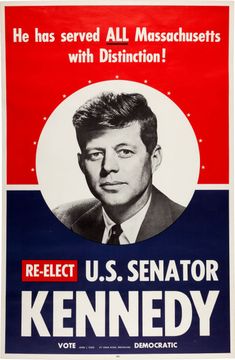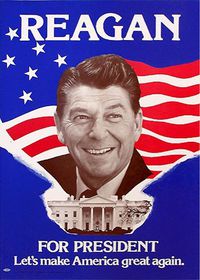Why are American states referred to as Red and Blue states
The history of terming states red or blue relates to United States elections since the 2000 national election. It was during that election the terms became popularized and denoted specific parties, with red representing Republican voting states and blue equated with Democratic party voting states.
The 2000 Election
The colors used to represent the two main political parties in the Unite States have not been standard and were only standardized for elections since the 2000 national election, when broadcasters began to use the two colors to refer to the two major parties and states that they were able to receive electoral college support in the Presidential election. However, what differentiates the United States from other countries is that the color scheme is unexpected. Traditionally, red was used to relate to left-leaning parties, particularly in Europe and the Americas, and blue was for right-leaning parties.[1] This was also the case in the United States in previous elections, where Democrats were sometimes denoted using a red color. Blue was usually used for right-leaning parties in both the United States and other democracies, such as the Conservative party in the UK.
However, in the 2000 elections, particularly as 24-hour news services became prominent in the run-up to the general election, increasingly standardized representation and the color combinations used became common. However, the color choices use for that election were not the first instance when these color combinations for parties were used. The original use of red for Republicans and blue for Democrats can be first seen in the late 19th century and early 20th century in Texas, where the state used that color coding to help illiterate voters recognize election results and choices. In the 1904 national election, blue and red were now used at a national level prior to the election to indicate which states leaned towards which party, with yellow denoting unclear leaning.
However, this was not repeated in later elections. Prior to 2000, both major political parties mostly used blue, although red was at times used, as their predominant color in advertisement and logos (Figures 1 and 2).[2]
Increasingly, red and blue were the two main colors used for the major parties, as this was what was used in Great Britain for some time, although in their case red stood for the left-leaning party (Labour) and blue was for the Conservatives. In the 1984 election, CBS did use red for Republican states and blue for Democratic states, but other networks did not use the same color scheme. By the 1996 election, networks such as CNN, NBC, ABC, CBS, and other smaller, local outlets used different coloring schemes, and sometimes changed them in different election, to indicate which states are likely or did vote for given parties.
In the 2000 election, major television outlets and newspapers such as the New York Times began to use the same color in their coverage. What made the colors, perhaps this time, become retained in people's minds was the lengthy process in which the 2000 election was resolved and the non-stop coverage of the process. With the election effectively lasting until the Supreme Court deciding its outcome weeks later after the election, viewers on television and readers in newspapers increasingly saw the color schemes chosen as the colors representative the main parties. Red was chosen for Republicans by outlets given that the word's first letter is the same as Republican. This then gave blue as the main color for Democrats. After the prolonged election, and controversial results, viewers and readers became accustomed to the coloring scheme used throughout the 2000 election, leading to its continual use in later elections as voters even began to expect these colors.[3]
Since 2000
Since 2000, media companies have generally characterized states as blue or red states, with purple (a mixture of the two colors) denoting states that could likely chose a Democratic or Republican candidate. Different (darker or lighter shades) of the main colors red and blue have since 2000 also been used to denote how likely a state is to vote in future elections for a given party. Deeper blue denotes states that are more likely to vote for the Democrats, while deep red denotes more solidly Republican-leaning stats. In effect, these color combinations have now denoted both electoral likelihood for given states, with the US general elections demonstrating relative stability for most states in that since 2000 states have mostly voted for the same party in the Presidential general election.
In fact, only 12 states have voted for a different party in different Presidential general elections since 2000. Most of these 12 states, however, have, in fact, mostly voted for one party (e.g., New Mexico voting for a Democratic candidate in every election since 2000 except once). Only Iowa has voted for an equal number of Democratic and Republican candidates in general elections for the Presidency.[4]
There has been a lot of criticism in how the media has used these colors. Increasingly, commentators have seen it as denoting the type of people that live in given states and their cultural and political leanings. A better representation would be to break the electorate by counties, where the divisions are generally categorized by education, gender, income levels, and if where one lives is a rural or urban location. Additionally, in state and local elections, the trends in electoral results show much more variability in which parties win, indicating that the color scheme does not suggest what party voters are likely to chose in local elections. In California, the Republican party has officially switched to blue as their color, noting that this is the historical color used by conservative parties.
The so-called "Hope" poster depicting Obama used red and blue to denote Obama's attempts to bridge blue and red state voters. However, this was not an official campaign poster. Critics have also argued that the standardize color representation has also polarized the electorate, as voters are classified based on the state and cultural leanings in that state. At a more visual perspective, cartographers and others have also argued that the size of states do not proportionally represent voters and their leanings. States might be better represented by their electoral size rather than by their geographic size when used with a color combination.[5]
Recent Developments
At a national level, both the electoral college system and relatively stable nature of how states vote means future elections, and where resources are spent, in the near future will generally concentrate in no more than 12 states. The divisions of red state and blue state have become so fixed that it is hard to see if and when there will be a change from these colors. Commentators have recently voiced concerns that these colors are simplifying the underlying differences in the electorate and the true factors that divide voters. Additionally, many voters do change which party or candidates they vote for, with many also choosing different parties within the same election, even if within a state-level results for general national elections have tended to be consistent.
Within parties, voters often show many differences, leading for some to call for different color or categorization terms to be used to indicate the diversity of voters found among the major parties. Others have called to going back to a period when no standard color was used, also allowing the parties to be more flexible as to what colors they use in their logos and advertisements. Nevertheless, these changes called for are unlikely to happen in the near future given the nature of mass media.[6]
Summary
The use of red states and blue states to characterize voters and which party states vote for at national and other elections is a recent development. It has led to some consequences, according to commentators and researchers, such as increased polarization in the electorate, while also masking diversity found even within political parties. It has also often masked the fact that most states, at least in local elections, have actually displayed greater diversity in which parties they vote for, even if the general national elections have been relatively stable in relation to which states each major political party wins. The nature of mass media probably means we are likely to continue using the colors chosen, even if the colors they represent for given parties should be switched if they followed historical patterns that derive from other democratic countries (i.e, red for Democrats and blue for Republicans).
References
- Jump up ↑ For more on colors used for political leanings, see: Sawer, Marian (2007). Wearing your Politics on your Sleeve: The Role of Political Colours in Social Movements. Social Movement Studies, 6 (1), 39–56.
- Jump up ↑ For more on the background as to how colors became associated with given political leanings, see: Gelman, A., & Park, D. (Eds.). (2010). Red state, blue state, rich state, poor state: why Americans vote the way they do (Expanded pbk. ed.). Princeton, NJ: Princeton Univ. Press.
- Jump up ↑ For more on how the 2000 election has influenced political discourse since then, see: Wayne, S. J., & Wilcox, C. (Eds.). (2002). The election of the century and what it tells us about the future of American politics. Armonk, N.Y: M.E. Sharpe.
- Jump up ↑ For more on the media and their use of colors for elections, see: Banville, L. (2017). Covering American politics in the 21st century: an encyclopedia of news media titans, trends, and controversies. Santa Barbara, California: ABC-CLIO, pg. 540.
- Jump up ↑ For more on critique used for color designations in elections, see: Hough, J. F. (2006). Changing party coalitions: the mystery of the red state-blue state alignment. New York: Agathon.
- Jump up ↑ For more on recent media critique and other trends in relation to election coverage, see: Cushion, S., & Thomas, R. (2018). Reporting elections: rethinking the logic of campaign coverage. Cambridge ; Medford, MA: Polity Press.

